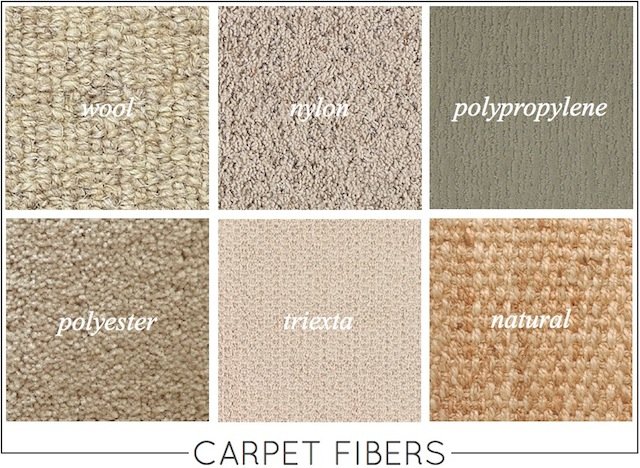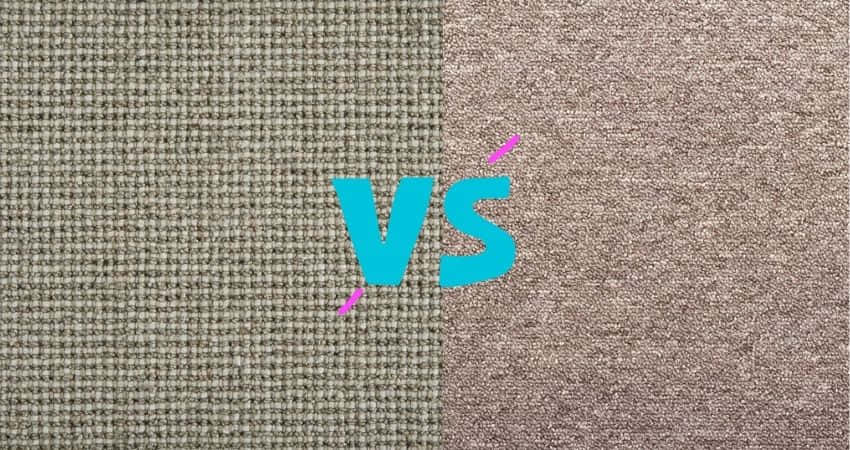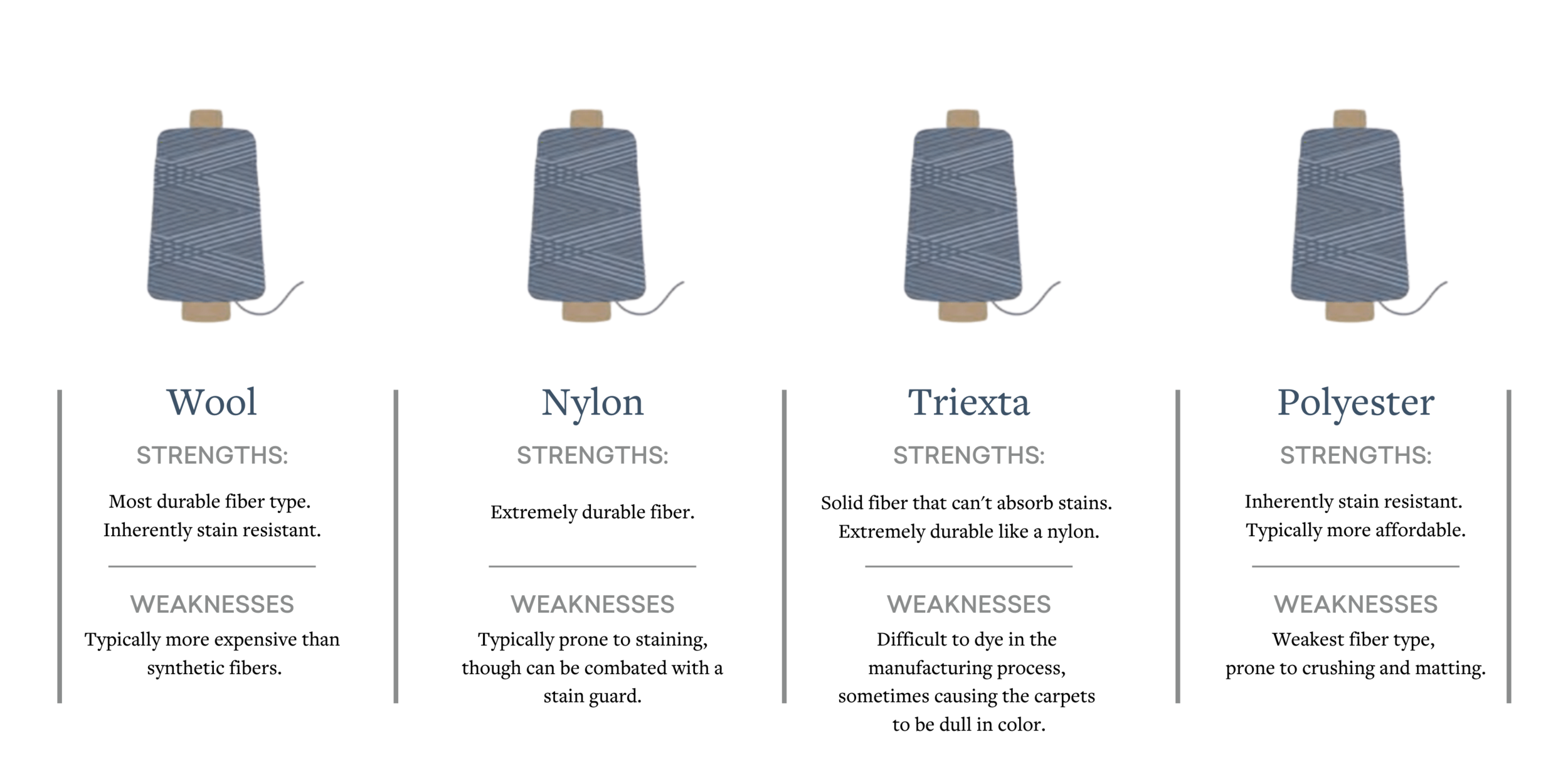Wool and nylon carpets both have their unique advantages and considerations. Wool carpets are natural, soft, and have excellent insulating properties, while nylon carpets are durable, stain-resistant, and more affordable.
In this blog, we will explore the characteristics of wool and nylon carpets, their suitability for different spaces, maintenance requirements, and environmental impact. Whether you are looking for a luxurious and eco-friendly option or a practical and long-lasting choice, understanding the differences between wool and nylon carpets will help you make an informed decision for your home or business.
Let’s dive into the world of wool and nylon carpets to discover which one best suits your needs and preferences.
Table of Contents
Introduction To Carpet Fibers
When it comes to carpet fibers, wool and nylon are two popular choices. Wool carpets are known for their natural softness, durability, and resistance to stains. They also offer excellent insulation and have a luxurious feel underfoot. However, wool carpets may require more maintenance and can be more expensive than other options.
On the other hand, nylon carpets are valued for their strength, resilience, and easy maintenance. They are also highly resistant to stains and abrasion, making them a practical choice for high-traffic areas. Additionally, nylon carpets often come in a wide range of colors and styles, offering versatility in design.

Credit: www.artisticcleaners.net
Historical Evolution Of Carpet Materials
Throughout history, wool has been a popular choice for carpet material, with ancient civilizations such as the Persians and Egyptians known for their intricate wool weaving techniques. However, the emergence of synthetic fibers in the mid-20th century revolutionized the carpet industry. Nylon, in particular, quickly gained popularity due to its durability and stain resistance, challenging the dominance of wool carpets. While wool boasts natural resilience and luxurious texture, nylon offers easy maintenance and affordability. The debate between wool and nylon carpets continues to be a topic of interest for homeowners, interior designers, and carpet manufacturers alike.
Texture And Feel Comparison
Wool and nylon carpets offer distinct textures and feels. Wool provides a luxurious and soft sensation underfoot, while nylon offers a more resilient and durable texture. Choose the carpet that best suits your preferences and lifestyle.
Wool and nylon are two popular options for carpets. When it comes to texture and feel, wool is known for its softness, providing a luxurious and comfortable underfoot experience. The natural fibers of wool create a cozy and warm sensation, making it a popular choice for bedrooms and living rooms where comfort is a priority.
On the other hand, nylon offers excellent resilience. It is a durable synthetic fiber that can withstand heavy foot traffic and maintain its shape over time. Nylon carpets are known for their ability to bounce back and resist crushing, making them suitable for high-traffic areas such as hallways and stairs.
| Softness of Wool | Nylon Resilience |
|---|---|
| Provides a luxurious and comfortable underfoot experience | Withstands heavy foot traffic and maintains its shape |
| Creates a cozy and warm sensation | Resistant to crushing and offers excellent bounce-back |
| Ideal for bedrooms and living rooms | Suitable for high-traffic areas like hallways and stairs |
Durability And Lifespan
Wool carpets are known for their durability and long lifespan due to their natural strength and resilience. However, nylon carpets have also become a popular choice as they are highly resistant to wear and tear, stains, and fading, making them a reliable option for high-traffic areas.
| Durability and Lifespan | |
|---|---|
| Wool’s Natural Robustness | Nylon’s Wear Resistance |
| Wool carpets are known for their natural robustness, making them highly durable and long-lasting. | Nylon carpets, on the other hand, offer excellent wear resistance, making them a popular choice for high-traffic areas. |
| Wool fibers have a natural elasticity and crimp that allow them to bounce back from foot traffic and furniture weight, maintaining their shape and appearance over time. | Nylon, a synthetic fiber, is exceptionally resilient and can withstand heavy use without showing signs of wear and tear. |
| Wool carpets also have a higher resistance to stains and are more likely to repel liquid spills, thanks to the natural oils present in the wool fibers. | Nylon carpets, on the other hand, are treated with stain-resistant coatings, making them easier to clean and maintain. |
Maintenance And Care
To maintain and care for wool vs nylon carpet, regular vacuuming and immediate spot cleaning are essential. Wool carpets require gentle cleaning with a neutral detergent, while nylon carpets can withstand more rigorous cleaning methods. Understanding the specific maintenance needs of each type of carpet is crucial for their longevity and appearance retention.
| Wool Carpet | Nylon Carpet |
|---|---|
| Wool carpets are natural and eco-friendly. They are known for their durability and resilience. Wool carpets are naturally stain-resistant and can be cleaned easily with a vacuum cleaner. However, they require professional cleaning for deep stains. | Nylon carpets are synthetic and durable. They are known for their resistance to wear and tear, making them ideal for high-traffic areas. Nylon carpets are also stain-resistant and easy to clean, making them a low-maintenance option. |
| When cleaning wool carpets, it is important to avoid using hot water or harsh chemicals. Instead, use a mild detergent and cold water to clean any stains. It is also important to blot the stain, rather than rubbing it, to avoid damaging the wool fibers. | When caring for nylon carpets, it is important to vacuum regularly to prevent dirt and debris from settling in. For stains, use a mild detergent and warm water to clean the affected area. Avoid using bleach or other harsh chemicals that can damage the carpet fibers. |

Credit: fixingexpert.ae
Allergies And Health Considerations
When choosing between wool and nylon carpet, it’s important to consider allergies and health. Wool is a natural, hypoallergenic material that can be a better choice for those with sensitivities. On the other hand, nylon carpets may be more resistant to mold and mildew, making them suitable for allergy sufferers.
| Allergies and Health Considerations |
| Wool and nylon carpets differ in their hypoallergenic qualities and impact on air quality. Wool is naturally hypoallergenic due to its fibers’ ability to repel dust mites, mold, and mildew. This is a significant advantage for people with allergies or respiratory issues. Wool also has a low toxicity level, making it safe for use in homes with children and pets. |
| Nylon carpets, on the other hand, can contribute to poor indoor air quality. They emit volatile organic compounds (VOCs) for an extended period after installation. This can cause headaches, dizziness, and respiratory problems. Nylon is also more likely to attract and retain dust and other allergens, making it a poor choice for allergy sufferers. |
Environmental Impact
Wool and nylon carpets have different environmental impacts. The sustainability of wool production is a key factor to consider. Wool is a renewable resource as it comes from sheep, which can be shorn annually. This makes wool carpets a more sustainable option. On the other hand, nylon carpets have a higher ecological footprint. Nylon is a synthetic material made from petroleum, which is a non-renewable resource. The production of nylon involves the extraction and processing of crude oil, contributing to environmental pollution. Additionally, the manufacturing process of nylon carpets consumes more energy and water compared to wool carpets. Therefore, in terms of environmental impact, wool carpets are a more sustainable choice compared to nylon carpets.
Cost Analysis
When comparing wool and nylon carpets, it is important to consider the investment value and affordability of each option.
Wool carpets are known for their high investment value. They are durable and can last for many years, making them a long-term investment for your home. Wool is a natural fiber that is resistant to stains, fading, and crushing, which adds to its longevity. Additionally, wool has natural insulating properties, making it energy-efficient and reducing heating costs in the long run.
On the other hand, nylon carpets are more affordable compared to wool. They are a popular choice for budget-conscious homeowners as they offer a cost-effective flooring solution. Nylon is a synthetic fiber that is known for its durability and resistance to wear and tear. While it may not have the same investment value as wool, nylon carpets still provide a long-lasting and reliable option for your home.
Ultimately, the choice between wool and nylon carpets will depend on your specific needs, budget, and preferences. Consider the investment value and affordability of each option to make an informed decision for your home.
Color And Design Options
Wool carpets offer a wide range of color options, from earthy and natural hues to rich and vibrant shades. The fibers absorb dyes in a unique way, resulting in a soft, muted appearance that adds warmth to any room. On the other hand, nylon carpets are known for their dye versatility, allowing for an extensive selection of bright and bold colors. The synthetic fibers can be easily dyed to achieve a wide spectrum of shades, making it a popular choice for those seeking a more modern and vivid look.

Credit: www.mouerysflooring.com
The Verdict On Comfort
When it comes to comfort, wool and nylon carpets both have their merits. Wool is known for its natural softness and warmth, making it a popular choice for those seeking a cozy feel underfoot. On the other hand, nylon carpets offer a resilient and plush texture, providing a comfortable surface for walking and lounging. Personal preferences play a crucial role in deciding between the two, as some individuals may prioritize the luxurious feel of wool, while others value the durability and softness of nylon. For areas with high foot traffic, such as hallways or living rooms, nylon carpets are recommended due to their ability to withstand wear and tear. In contrast, wool carpets are ideal for bedrooms or areas where a touch of elegance is desired. Ultimately, the choice between wool and nylon carpets depends on individual needs and the specific requirements of each space.
Frequently Asked Questions
What Is Better, Carpet, Wool Or Nylon?
Wool carpet is more expensive than nylon but it is more eco-friendly and luxurious. Nylon is more durable, stain-resistant and easy to maintain. Both have their own advantages and disadvantages, so the choice depends on your budget, lifestyle and personal preferences.
What Are The Disadvantages Of Wool Carpet?
Wool carpet has a few drawbacks. It can be expensive, prone to fading in direct sunlight, and can absorb stains and spills. It also requires regular maintenance to prevent matting and shedding. However, wool is natural and sustainable, providing excellent insulation and durability.
What Are The Negatives Of Nylon Carpet?
Nylon carpets can be prone to staining and are less eco-friendly than other options. They can also be more expensive.
Which Is Better Wool Or Synthetic Carpet?
Wool carpet is more natural and durable, while synthetic carpet is stain-resistant and budget-friendly. Ultimately, the choice depends on your specific needs and preferences.
Conclusion
To conclude, both wool and nylon carpets have their unique benefits. Wool carpets are eco-friendly, durable, and provide excellent insulation. Nylon carpets, on the other hand, are stain-resistant, easy to clean, and cost-effective. When deciding which one to choose, consider your lifestyle, budget, and personal preferences.
Ultimately, the decision comes down to what works best for your home and family. So, choose wisely and enjoy your beautiful and comfortable carpet for years to come.
